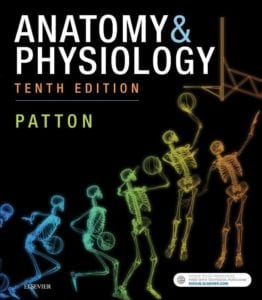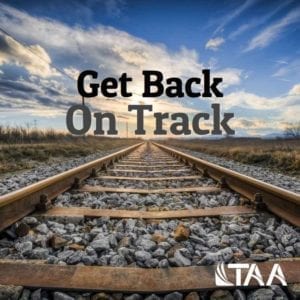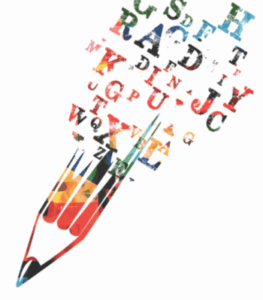Friday 27 April 2018
Wednesday 25 April 2018
24 April, 2018: Learning science and textbook design: The value of pre-testing to jumpstart student learning
 In the hands of an experienced teacher and motivated students, a textbook can be a powerful tool for learning. As with any tool in one’s toolbox, a design that enhances utility, and thereby improves performance, can make a textbook an effective, frequently used implement. As a textbook author, I realize that although effective communication of content is at the center, my textbooks will be used successfully only if the instructional design promotes learning.
In the hands of an experienced teacher and motivated students, a textbook can be a powerful tool for learning. As with any tool in one’s toolbox, a design that enhances utility, and thereby improves performance, can make a textbook an effective, frequently used implement. As a textbook author, I realize that although effective communication of content is at the center, my textbooks will be used successfully only if the instructional design promotes learning.
I’ve been a student of learning science for a long time. Although I’m not close to mastering it, I’ve already found that quite a few applications of the current learning strategies I use in my teaching and in my textbook are working. I want to share with you my most recent application of learning science to textbook design in the hope that it will spark some ideas that are useful for your own projects.
24 April, 2018: Pedagogy of book and chapter organization
 Does the organization of the textbook relate to pedagogical approaches used to teach with it? What pedagogical perspectives are represented by the organizational style we choose for a book and its chapters? These questions percolated through my work on a recently completed book manuscript. When thinking about the organization of the book, I reflected on ways people read books today and how they use them to learn.
Does the organization of the textbook relate to pedagogical approaches used to teach with it? What pedagogical perspectives are represented by the organizational style we choose for a book and its chapters? These questions percolated through my work on a recently completed book manuscript. When thinking about the organization of the book, I reflected on ways people read books today and how they use them to learn.
The audience for this book about the design of collaborative learning will include instructors or instructional designers across disciplines, as well as students in education courses. In other words, some might be reading it for their own professional purposes, while others might be reading it as assigned for a course. How might they use the book, and what can I do as a writer to facilitate meaningful learning?
24 April, 2018: Who can I get to write that chapter?
 You are all set. The approach to your topic is inspired. A firm table of contents has been finalized. Your book proposal is great. And you now have a contract with a respected publisher!
You are all set. The approach to your topic is inspired. A firm table of contents has been finalized. Your book proposal is great. And you now have a contract with a respected publisher!
But, who is going to do all this writing? You have probably carved out specific chapters that you will write. You may have spoken with some colleagues that like the project and said they would be glad to help out. You have a list of likely people to write other key chapters, but you will need more contributors. How do you go about identifying and asking people to contribute to your book?
24 April, 2018: Common errors leading to journal article rejection
 According to the American Psychological Association’s Summary Report of Journal Operations, 2016, the 29 journals included in the report received a combined total of 12,166 submitted manuscripts with an overall rejection rate of 71%. This means that on average less than 3 of every 10 submitted manuscripts is accepted for publication.
According to the American Psychological Association’s Summary Report of Journal Operations, 2016, the 29 journals included in the report received a combined total of 12,166 submitted manuscripts with an overall rejection rate of 71%. This means that on average less than 3 of every 10 submitted manuscripts is accepted for publication.
To better understand the common reasons journal articles are rejected, we sought the insight of several TAA members experienced in the academic journal article publishing process.
Katie Van Heest, an editor at Tweed Editing, identified a common error leading to rejection by journals as “not following submission guidelines!” Noting the routine provision of guideline information on journal websites, Van Heest says, “Complying with a publication’s formatting and style preferences shouldn’t be considered a tedious matter of jumping through arbitrary hoops: it’s an opportunity to help the editors and peer reviewers envision the article fitting right in with their journal! It’s effort well spent.”
24 April, 2018: 32 Tech tools you want in your 2018 writer’s toolbox
 When you hire a professional to do any work, you not only expect them to have the knowledge and experience necessary for the job, you also expect them to have the right tools. For example, if a carpenter showed up to the job site without a saw, you might question their abilities. By the same token, there is more than one type of saw available and having the right saw for the job is equally important.
When you hire a professional to do any work, you not only expect them to have the knowledge and experience necessary for the job, you also expect them to have the right tools. For example, if a carpenter showed up to the job site without a saw, you might question their abilities. By the same token, there is more than one type of saw available and having the right saw for the job is equally important.
In this article, I offer eight categories of tech tools you should have in your writer’s toolbox, with different options for each. You certainly don’t need all of these tools, and there may be other tools that are more appropriate to your style of writing, but these tools can help in building a solid foundation for most of your writing jobs.
24 April, 2018: 5 Key principles for a sustainable writing practice
Why write? The old adage, “publish or perish” is alive and well, and there can be negative career consequences resulting from not publishing. In addition, writing and publishing bring career-enhancing rewards, visibility among our peers locally, nationally, and, even, internationally, and, as Boice (1990) underscores, writing is a form of “self-education.”


The expectation that faculty write and publish presents a number of challenges, not the least of which is fitting writing in with the other consistent and persistent demands of the job. Often times these urgent demands and very important tasks jump to the top of the “to do” list, causing the important but not urgent task of academic writing to fall off.
In my first years as an assistant professor, my department-assigned mentor told me, “just write.” However, the “just write” advice was not enough. Like most of us, because I never received any formal training in academic writing (Cameron, Nairn & Higgins, 2009), I lacked confidence. In addition, I realized that writing and getting myself to write might be more complicated than just sitting down to write.
24 April, 2018: Build a better plan: How to bounce back when your semester feels out of control

It’s the middle of the semester. You want to spend all your time writing but you have to grade midterms. You’re not nearly as far along in your articles as you want to be – that manuscript you said you’d submit in February is still sitting on your desk. There’s no end in sight – completing it seems like a distant goal. What do you do?
Good news…You’re not the only one who’s feeling discouraged because you didn’t finish a project when you thought you would. People grossly underestimate the time it takes to complete a project, and this is especially the case for complex projects. Psychologists refer to this as the planning fallacy, and it happens to everyone. Yet, while knowing you’re not alone is comforting, it doesn’t exactly help you get that manuscript off your desk.
You’re looking forward to the end of the semester, when you think you’ll finally have time to write. Yet, you have some projects you have to move forward now, and you’re feeling the pressure. You might be asking yourself, “what have I been doing since January?” It seems like you’ve gotten nothing done. This was the year you made a resolution to write every day and it’s not exactly working out. Naturally, you’re feeling discouraged and anxious.
24 April, 2018: Successfully building collaborative authoring relationships
 Developing a collaborative relationship with other authors can be both rewarding and challenging. For many, writing is an individual effort, so how do you determine when it is beneficial to partner with one or more other authors on a manuscript? To learn more about the advantages of author collaboration, we sought the insight of several TAA members who have been successful in developing manuscripts with co-authors.
Developing a collaborative relationship with other authors can be both rewarding and challenging. For many, writing is an individual effort, so how do you determine when it is beneficial to partner with one or more other authors on a manuscript? To learn more about the advantages of author collaboration, we sought the insight of several TAA members who have been successful in developing manuscripts with co-authors.
Q: What are some advantages of finding a collaborator?
A: Drew Curtis, co-author of Abnormal Psychology: Myths of ‘Crazy’: “Collaboration offers numerous benefits, which is why most academic disciplines encourage it. A collaborative relationship can advance conceptualization, provide a diverse perspective, assist with division of labor, foster support and encouragement, and promote professional growth. Forming collaborative relationships can increase research publications and strengthen careers (Sternberg, 2017). Within psychological science, collaborative publications are considered more significant and more often cited (Zweigenhaft & Borgida, 2017).”
Tuesday 24 April 2018
24 April, 2018: Rejecting the premise of writer’s block: Write your way out
 When you talk with academic writers about productivity, you are likely to hear the term ‘writer’s block’. Despite the prevalence of this term, I am resistant to identifying common academic writing difficulties as writer’s block. Most writers who are struggling with their writing are actually struggling with their thinking. That isn’t just a semantic quibble: it matters that we grasp exactly what is inhibiting our writing processes. When we diagnose ourselves as having writer’s block, we can start to believe that we aren’t currently able to write. If you find yourself with a sore leg, it may well be that avoiding walking is a sound strategy. If you find yourself unable to write, might it be a sound strategy to avoid writing? The answer to that question is almost always no. Not writing has little-to-no curative power, in my experience.
When you talk with academic writers about productivity, you are likely to hear the term ‘writer’s block’. Despite the prevalence of this term, I am resistant to identifying common academic writing difficulties as writer’s block. Most writers who are struggling with their writing are actually struggling with their thinking. That isn’t just a semantic quibble: it matters that we grasp exactly what is inhibiting our writing processes. When we diagnose ourselves as having writer’s block, we can start to believe that we aren’t currently able to write. If you find yourself with a sore leg, it may well be that avoiding walking is a sound strategy. If you find yourself unable to write, might it be a sound strategy to avoid writing? The answer to that question is almost always no. Not writing has little-to-no curative power, in my experience.
I’m not saying that we don’t need to take breaks; there are many things that we can do away from our desks to clear our minds and loosen up our ideas. But when we are committed to working, the act of writing is often the most immediate way to tackle the problems in our thinking. The risk of identifying inevitable writing challenges as writer’s block is that doing so can lessen the chance that we will use writing to move our ideas forward.
Subscribe to:
Posts (Atom)



